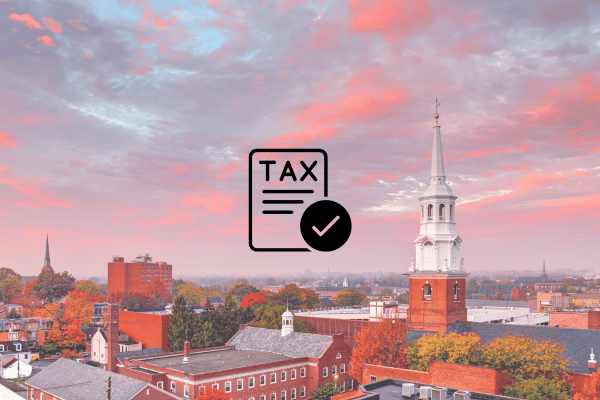Pennsylvania R&D Tax Credit: A Guide for Businesses

Are businesses in Pennsylvania entitled to the Research and Development Tax Credit (R&D Tax Credit)? How is this tax credit unique in the state? We’ll cover the basics of PA R&D tax credit in this article. We’ll also look into how companies can qualify for this tax benefit.
What are the Pennsylvania R&D Tax Credits?
The R&D tax credit is a federal tax benefit that permits qualified businesses a dollar-for-dollar reduction in a company’s tax liability for certain domestic expenses. The Pennsylvania research credit is quite similar to the federal version, including the definition of qualifying research.
What’s unique about Pennsylvania is that technology companies can sell any unused R&D tax credits in the open market to help advance and grow their businesses. Moreover, the credit rate in Pennsylvania is 10% (20% for qualified small businesses).
For Pennsylvania research credit to be filed, the qualified research activity must have taken place in the state. Excess Pennsylvania research credits can be carried forward for fifteen years and are not refundable. However, Pennsylvania offers a modified Alternative Simplified Credit.
Are R&D Tax Credits Available in Pennsylvania?

Yes, but there are some modifications to the federal tax benefit in Pennsylvania. As mentioned, the credit rate in Pennsylvania is 10%, but it is extended to 20% for qualified small businesses. According to Act 85 of 2016, the Pennsylvania research credit sunset date has been repealed, and the total tax credit cap is $55,000,000.
Eligibility Criteria for Pennsylvania Businesses
For a business based in Pennsylvania to be eligible for the research and development credit, they must meet the following criteria:
- The company must be an entity subject to Personal Income Tax (Article III) or Corporate Net Income Tax (Article IV).
- The business must have research expenses incurred for R&D activities conducted within Pennsylvania.
- The entity should be in state tax compliance with the laws and regulations of the Commonwealth, as determined by the Pennsylvania Department of Revenue.
- The company should have at least two years of R&D expenditures.
Four-Part Test for Qualifying Activities
To determine if activities qualify for the tax credit, it must pass the four-part test:
Permitted Purposes
The activity must relate to a new or improved business component’s function, performance, reliability, quality, or composition. It should intend to develop a new or improved product, process, or software. Moreover, it ensures that the research is not conducted for non-commercial purposes, such as social science research or arts-related endeavors.
Technological in Nature
To qualify for research credits, the activity should fundamentally rely on principles of physical sciences, biological sciences, computer science, or engineering and on scientific methods. This requires the use of technology or engineering in a field of science.
Moreover, it aims to develop or improve a product, process, or software’s functionality, performance, reliability, or quality. Examples include developing new materials, improving manufacturing processes, or enhancing software functionality.
Elimination of Uncertainty
The activity must be intended to discover information to eliminate uncertainty concerning a particular method or capability for developing or improving a product or process. Uncertainty exists if the capability, method, or design of the product, process, or software is uncertain or not readily known.
Process of Experimentation
The activity must constitute the process of experimentation involving simulation, evaluation of alternatives, confirmation of hypotheses through trial and error, testing and modeling, or refining or discarding of hypotheses.
It should involve a systematic process designed to evaluate one or more alternatives and include testing hypotheses, modeling, prototyping, and iterative analysis. It also needs the identification of uncertainties and the testing of potential solutions to resolve them.
Calculating the Pennsylvania R&D Tax Credit

The Pennsylvania research credit equals 10% (large businesses) or 20% (small businesses) of Pennsylvania QREs less the greater of A) 50% of expenses or B) the average of the prior 4 years of QREs (i.e., a 4-year ASC equivalent). To calculate a business’s R&D tax credit, they need the following data:
- Claim Period Qualified R&D Expenses (QREs)
- QREs for Prior 4 Years
The Pennsylvania R&D Credit is claimed by filing out the online R&D Tax Credit Application. The application is due on September 15th, even if the date falls before your state tax return deadline. The base amount is equal to the average Pennsylvania-qualified research expenses for the four preceding taxable years.
Selling or Transferring the Pennsylvania R&D Tax Credit
Pennsylvania permits taxpayers to sell or assign their R&D tax credits to a buyer through the Research and Development (R&D) Tax Credit Assignment Program.
Qualifying PA Research Expenditures
In general, the following expenditures can be included in one’s R&D tax credits:
- Wages paid to individuals involved in research and development activities. This includes people managing or supporting the research activity.
- Supplies bought for research and development. Any tangible object bought for this activity is considered a supply.
- Contract research expenses. Contract research expenses are when a business performs qualified research on behalf of the taxpayer. In this case, 65% of the amount paid to the non-employee can be considered a qualified expense.
How to Claim Pennsylvania R&D Tax Credits
Companies must file IRS Form 6765, Credit for Increasing Research Activities. This process includes identifying qualifying research activities and providing documentation proving these costs meet the Internal Revenue Code Section 41 requirements. Companies may use business records, financial records, oral testimonies, and technical documents.
Before you complete this form, you should familiarize yourself with the instructions mandated by the IRS. The PDF version of this form can be easily downloaded from the IRS website.
In general, the IRS Form 6765 has four sections:
- Section A is used to claim the regular credit and contains 11 lines of required information.
- Section B applies to the Alternative Simplified Credit or ASC.
- Section C identifies additional forms and schedules that require reporting based on one’s business structure.
- Section D only applies to qualified small businesses or QSBs making a payroll tax election.
The IRS recommends that companies calculate their credit using both regular and simplified credit methods, and then they fill out the section (A or B) that would result in the greatest tax benefit.
Benefits of the Pennsylvania R&D Tax Credit
The are plenty of benefits for companies that are involved in community and economic development. Here are some you should take note of:
- Credit carryforward: Excess Pennsylvania research credits can be carried forward for fifteen years and are not refundable.
- Transferable tax credit: Pennsylvania permits taxpayers to sell or assign their R&D tax credits to a buyer.
- Flow-through entities: This tax credit allows for flow-through entities for employees’ personal income tax.
- Integrating with federal R&D tax credits: The Pennsylvania R&D tax credit can be filed alongside the federal tax credit.
Claim PA R&D Tax Credits Now
Companies with qualified research expenses should maximize research and development tax credits. Fortunately, tax credit experts can ensure a company submits the right documentation and provides the correct computation. Fill up our form and get in touch with us today.
FAQs
Does Pennsylvania have an R&D tax credit?
Yes, the state of Pennsylvania offers the R&D tax credit.
What qualifies for the R&D tax credit?
Companies that perform qualified research activities can claim the R&D tax credit.
What is the PA film tax credit?
Pennsylvania offers a 25% tax credit to productions that spend at least 60% of their total budget in the Commonwealth.
What states offer R&D tax credits?
The R&D tax credit is a federal benefit covering all the states.